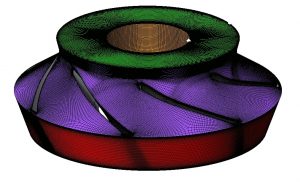

Here are five tips on how to create a better mesh and ensure the accuracy of your simulation results. Such quirks in meshes are case-specific and will not be covered in this article. Likewise, while a mesh may contain millions of nodes, that fact alone does not necessarily equate to quality. This is something you want to avoid as much as possible. Such instability is typically caused by poor-quality or illegal cells. A high-quality mesh also means that there is an optimal balance between the computational cost and the level of fineness achieved.Ī low-quality mesh will not only result in inaccurate simulation results but might even cause the solver to produce an error due to instability. Importance of an Accurate and High-Quality MeshĪs a good mesh is the basis of an FEA or CFD online simulation, it is important to understand exactly why ensuring its accuracy and quality is critical.Ī common question is: “If I want a better mesh quality, can’t I just increase the fineness level to as high as possible?” While increasing the fineness will typically yield a higher quality mesh, the computational cost will significantly increase as well.

Sign up & check out our SimScale blog for much more! However, in order to achieve the quality level that most accurate simulations require, the highly customizable hex-dominant parametric is the preferred option.Īlthough generally valid for mesh generation, the tips below will particularly apply to the hex-dominant parametric method.

Both of these automatic hex methods provide a simple and effective way to quickly create a mesh that can be easily adjusted for fineness depending on the usage of external or internal flow. The remaining three hex methods, as you can guess, are only used for CFD meshes. Although quadrangular surface elements are an option, sometimes errors may occur if the option is enabled. The tet-dominant method is typically used in 3D meshes where the robustness is more important. Of the four meshing methods, the hex-based meshers are only for use in CFD, while the tet-dominant method can be applied to both CFD and FEA. Hex-dominant automatic “wind-tunnel/external flow” (only CFD).SimScale offers four primary meshing methods: As mentioned by the OpenFOAM wiki, “snappyHexMesh is more of a mesh sculptor than a generator, because it requires an already existing base mesh to work with”. Meshing on SimScale is done with snappyHexMesh-a mesh generator that “builds” meshes iteratively on your geometry. CAD Meshing Simulation Tip FEA Mesh of a Bicycle Frame


 0 kommentar(er)
0 kommentar(er)
